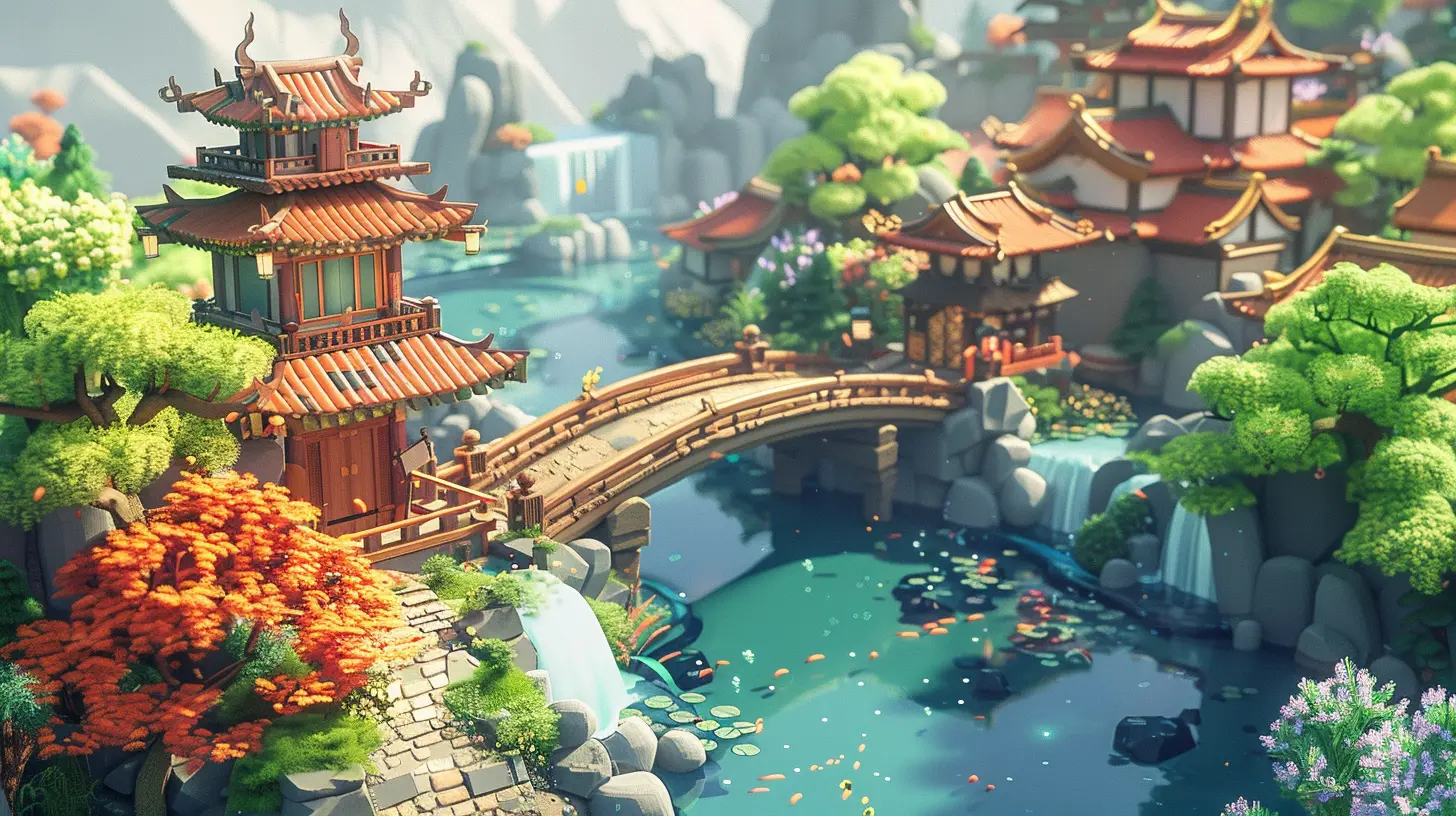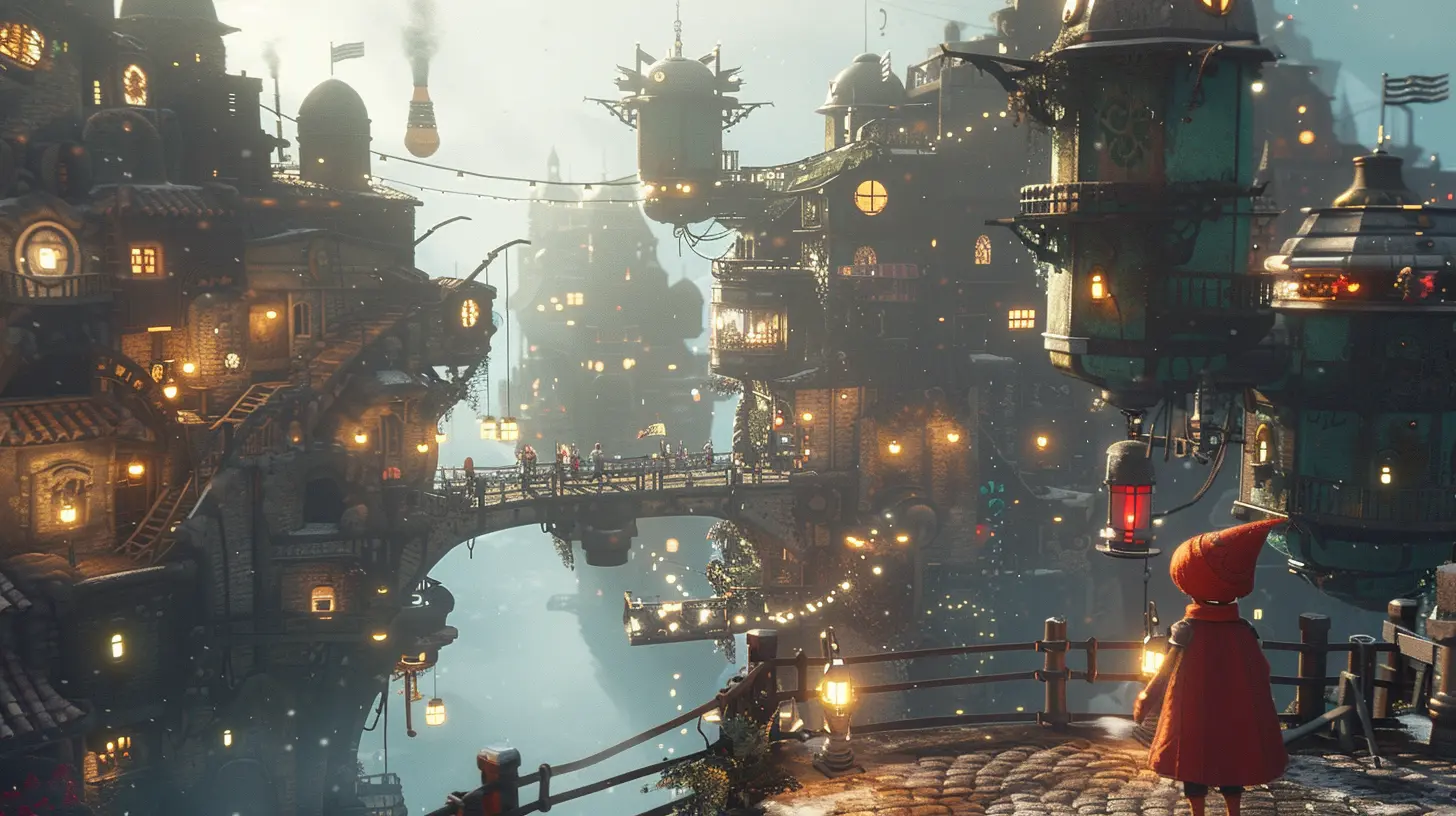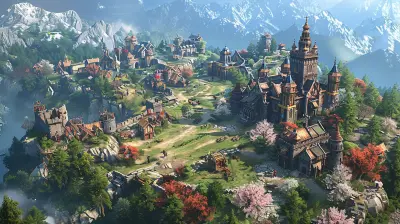Crafting Systems: The Balance Between Complexity and Accessibility
8 October 2025
Crafting in games—just reading that word gets some players excited and others reaching for the exit button. Whether you're brewing potions in a fantasy RPG or upgrading gear in a sci-fi shooter, crafting systems can be a core part of the gameplay. But here's the thing: not all crafting systems are created equal. Some are simple and satisfying. Others? So mind-boggling they feel like studying for a chemistry final.
So how do developers find that sweet spot? The elusive balance between complexity and accessibility? That's what we’re diving into today. Buckle up, we’re going on a crafting adventure filled with creativity, chaos, and a sprinkle of game dev magic.
What Is a Crafting System, Anyway?
Before we get into the nitty-gritty, let’s clear up exactly what we're talking about. A crafting system is a game mechanic that lets players create new items or upgrade existing ones using a set of resources or components.Think of it like cooking. You gather your ingredients (resources), follow a recipe (blueprint or formula), and boom—you’ve got a delicious meal—or in this case, maybe a flaming sword or health potion.
Crafting systems are everywhere—from survival games like "Minecraft" and "Rust," to RPGs like "Skyrim" and "Final Fantasy XIV," and even in MMOs and mobile games. They’re flexible, creative, and deeply immersive… when done right.
Why Do Players Love Crafting?
Let’s be honest, there’s something special about making your own stuff in-game. It adds a layer of satisfaction you just don’t get from looting a chest or buying from a vendor. Here’s why crafting resonates with players:- Control and Customization: You’re not at the mercy of RNG loot drops. You can build what you need, when you need it.
- Progression: Nothing screams progress like crafting a high-tier weapon from rare materials you hunted down yourself.
- Experimentation: Some games encourage you to mix and match to discover new recipes. It's like being a fantasy mad scientist.
- Survival and Strategy: In survival games, crafting isn’t just fun—it’s essential. You either build a shelter or freeze your digital butt off.
But while all of this can be incredibly rewarding, it can also get... overwhelming.
The Problem With Too Much Complexity
Complex crafting systems aren’t inherently bad. In fact, for hardcore crafters, complexity can be the whole point. But for the average player, a system that’s too intricate can feel like trying to decipher ancient scrolls.Here’s what often goes wrong:
1. Overwhelming Resource Management
When a game requires 10 different rare ingredients, 3 power cores, and a drop of unicorn tears just to craft a basic tool, you're gonna lose people fast. Too many resources mean too much time spent grinding—and not enough actually playing.2. Confusing Interfaces
If your crafting menu looks like a spreadsheet got into a fight with a flowchart, something's gone wrong. Crafting should feel intuitive, not like you need a degree in UI/UX to figure it out.3. Lack of Guidance
Some games leave players completely in the dark. No tutorials, no recipes, just vibes. While discovery can be fun, it’s frustrating when you have no clue what you’re doing or what materials even exist.
Accessibility: Where Simplicity Shines
On the flip side, overly simple crafting systems can feel shallow or pointless. Click button, make item... yawn. When everything is handed to you with zero challenge or depth, crafting loses its charm real fast.So what's the ideal? Something that hits that golden balance—a system that’s deep enough to keep players engaged but accessible enough to not send them running.
Here’s what that looks like:
1. Progressive Complexity
Start simple and build complexity over time. Let players craft basic items early on, then introduce rarer recipes, modifiers, or crafting stations as they level up or explore new areas.It’s like learning to cook—first you boil an egg. Later, you’re whipping up gourmet dishes.
2. Clear, Intuitive Interfaces
Good interfaces go a long way. Let players see what ingredients they need, what they already have, and maybe even show a preview of the final item.A drag-and-drop system, search filters, or even a visual recipe book can do wonders.
3. Meaningful Crafting
Every item should feel like it serves a purpose. If you can craft 100 different swords but only one is actually worth using, the system starts to feel bloated. Less can be more—when each crafted item feels useful, valuable, and unique.Examples of Games That Got It Right
Let’s tip our hats to a few games that really nailed the balance.🛠 Minecraft
Love it or hate it, Minecraft is a crafting legend. Recipes are straightforward, the interface is clean, and the possibilities are endless. The system is accessible to kids but deep enough for adult players. Plus, Redstone adds a whole new layer of complexity for those who want it.🧙 Skyrim
Skyrim’s crafting is a bit more structured. There’s smithing, enchanting, and alchemy. It’s simple to learn but has enough depth for players who want to min-max their gear. Plus, the progression feels natural—you get better at crafting just by doing it.⚔️ Monster Hunter: World
Monster Hunter strikes a great balance by tying crafting into core gameplay. You hunt monsters, gather materials, then craft gear based on those materials. It keeps you engaged with the world, and there's a clear connection between your actions and your rewards.Crafting Systems That Missed the Mark
No shade, but let’s talk about some crafting systems that stumbled a bit.🚀 No Man's Sky (Early Days)
The game has since improved massively, but during its early days, crafting in No Man's Sky felt like a spreadsheet simulator. So many resources, confusing names, and not much guidance—players were lost in space and in their menus.🧱 Fallout 76
Fallout’s base-building and crafting system had big ambitions, but it overwhelmed many players. Complex interfaces, hard-to-find resources, and unclear crafting processes made it more stressful than fun for some.Tips for Developers: Getting Crafting Right
If you're a game dev out there trying to perfect your crafting system, here's some friendly advice from the player side of things.🧩 Make It Modular
Allow players to add enhancements or modifiers to base items. Modular systems add depth without overcomplicating the core.📘 Provide a Recipe Log
Let us track what we’ve crafted and what we can potentially make. Recipe discovery can still be a thing, but don’t make us write it all down on sticky notes.⚡ Integrate with Gameplay
Don’t treat crafting as a side activity. Tie it into quests, survival, story progression, or combat. The more integrated it feels, the more natural it becomes.🎮 Offer Tutorials and Tooltips
Teach us the basics, then get out of the way. Optional tutorials or hover-to-explain tooltips can keep things accessible without dumbing it down.Where Crafting Is Going: What’s Next?
With the rise of AI and procedural generation, the future of crafting systems could get really wild. Imagine games that adapt based on your crafting habits or generate entirely new recipes based on your playstyle.We’re also seeing more hybrid systems—blending crafting with base-building, economics, and co-op gameplay. The possibilities are endless, but the challenge remains the same: keep it fun, keep it fair.
Final Thoughts
Crafting systems are like seasoning in a dish. Just the right amount? Chef’s kiss. Too much or too little? It spoils the whole thing. The best crafting systems keep players engaged, reward creativity, and feel like a meaningful part of the game—not just a menu to mash through.Whether you're a gearhead who loves complex crafting trees or a casual player who just wants to whip up a potion and move on, the true magic lies in balance. Complexity without confusion. Simplicity without boredom.
So next time you click "craft," take a moment to appreciate the invisible tug-of-war behind that item in your inventory. It’s not just code—it’s game design at its finest.
all images in this post were generated using AI tools
Category:
Game MechanicsAuthor:

Pascal Jennings
Discussion
rate this article
1 comments
Tamara Vance
Great article! You’ve highlighted the essential challenge of balancing complexity and accessibility in crafting systems. It’s fascinating how well-designed mechanics can enhance gameplay without overwhelming players. Looking forward to seeing more discussions on this topic in future posts!
October 13, 2025 at 4:25 PM


